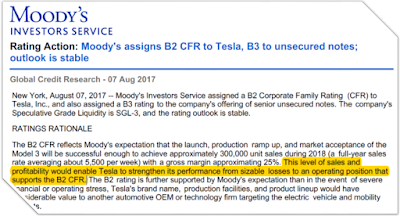2017 was a banner year for equity investors across the globe, including in the U.S., as the S&P 500 index gained over 19% (excluding dividends). Moreover, those gains were accompanied by extraordinarily low levels of volatility.
We are nearly three months into 2018, and to say that things have not been as smooth would be an understatement, as volatility has returned with a vengeance to equity markets. The increase in volatility was especially acute on the day of February 5, 2018, when the CBOE Volatility Index (VIX®) moved more than it ever had in history, closing over 20 points higher from the previous day’s close (rising from 17.31 to 37.32), while equity markets plunged (the S&P 500 fell over 4%).
The 116% spike in the VIX reportedly triggered the implosion of a popular exchange-traded product called the VelocityShares Daily Inverse VIX Short Term ETN (ticker: XIV). XIV enabled investors to bet that low volatility would continue to rule the day. Through XIV, they would essentially be betting against short-term VIX futures. The VIX spike and XIV implosion has piqued the interest of investors, regulators, lawyers and journalists. Interested parties wanted to know the reasons for the volatility spike and whether there was any wrongdoing involved.
Before we consider the possibility of misconduct, we should take a step back to consider what exactly the VIX measures. The VIX is a market-based measure of expected, or implied, volatility. The Chicago Board of Exchange (CBOE) derives the VIX by backing out the volatility that is implied by market quotes for a portfolio of out-of-the-money put and call options on the S&P 500 index (SPX). With the aggregated option quotes we can gauge the volatility for the underlying SPX.
Back in May 2017, well before all of the recent VIX excitement, researchers Griffin and Shams released a paper entitled, “Manipulation in the VIX?” The Griffin paper details how the VIX settlement process can be gamed by simply posting bids and offers (that may never lead to actual trade executions) to affect the VIX settlement. This possibility is reminiscent of spoofing conduct reported across various markets such as FX, Treasury futures, precious metals futures, and equity index futures, where some market participants are thought to have influenced market prices by posting bids and offers that they have no intention of actually executing. Griffin concludes that price and volume data patterns are consistent with a trading strategy whose purpose is affecting the VIX settlement. The paper notes:
“In sum, our findings show that the VIX settlement appears susceptible to manipulation, and that the aggregate evidence aligns itself with what one would expect to see in the case of market manipulation of certain settlements. However, we cannot fully rule out all potential explanations without more granular data.”
One week after the wild VIX ride of February 5, 2018, a DC-based law firm, Zuckerman Law, released a letter to the SEC and CFTC on behalf of its anonymous whistleblower-client, alleging manipulation of the VIX. The next day, former CFTC Commissioner Bart Chilton noted during a CNBC television interview that, “The VIX has been suspect for at least seven years.”
And on March 9 of this year, the law firm Cohen Milstein filed a purported class action complaint on behalf of Atlantic Trading USA, LLC against unknown John Does, alleging manipulation of the settlement price for VIX futures and options. The complaint alleges that defendants “caused the monthly final settlement price of expiring VIX contracts to be artificial. They did so by placing manipulative SPX options orders that were intended to cause, and at minimum recklessly caused, artificial VIX contract settlement prices in the expiring contracts.”
With the VIX being prone to manipulation, and billions of dollars’ worth of derivatives and exchange traded products tied to it, we’d like to see if there might be a better way of calculating expected volatility – a method that is not as prone to the vagaries of potential wrong-doers.
PF2 consultant Joe Pimbley and PF2's Gene Phillips have done just this in a paper called Fix the VIX, which can be accessed here, courtesy of the Global Association of Risk Professionals (GARP).
Our investigation finds that three approximation techniques being implemented by the CBOE in “calibrating” the VIX may not be necessary, and may exacerbate errors or increase the VIX’s susceptibility to manipulation or error. Of course, volatility won’t go away. But the VIX will more accurately capture it and describe it, with a couple of … fixes.



